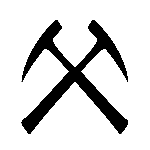4.1: Classification of Igneous Rocks
- Page ID
- 28231
\( \newcommand{\vecs}[1]{\overset { \scriptstyle \rightharpoonup} {\mathbf{#1}} } \)
\( \newcommand{\vecd}[1]{\overset{-\!-\!\rightharpoonup}{\vphantom{a}\smash {#1}}} \)
\( \newcommand{\id}{\mathrm{id}}\) \( \newcommand{\Span}{\mathrm{span}}\)
( \newcommand{\kernel}{\mathrm{null}\,}\) \( \newcommand{\range}{\mathrm{range}\,}\)
\( \newcommand{\RealPart}{\mathrm{Re}}\) \( \newcommand{\ImaginaryPart}{\mathrm{Im}}\)
\( \newcommand{\Argument}{\mathrm{Arg}}\) \( \newcommand{\norm}[1]{\| #1 \|}\)
\( \newcommand{\inner}[2]{\langle #1, #2 \rangle}\)
\( \newcommand{\Span}{\mathrm{span}}\)
\( \newcommand{\id}{\mathrm{id}}\)
\( \newcommand{\Span}{\mathrm{span}}\)
\( \newcommand{\kernel}{\mathrm{null}\,}\)
\( \newcommand{\range}{\mathrm{range}\,}\)
\( \newcommand{\RealPart}{\mathrm{Re}}\)
\( \newcommand{\ImaginaryPart}{\mathrm{Im}}\)
\( \newcommand{\Argument}{\mathrm{Arg}}\)
\( \newcommand{\norm}[1]{\| #1 \|}\)
\( \newcommand{\inner}[2]{\langle #1, #2 \rangle}\)
\( \newcommand{\Span}{\mathrm{span}}\) \( \newcommand{\AA}{\unicode[.8,0]{x212B}}\)
\( \newcommand{\vectorA}[1]{\vec{#1}} % arrow\)
\( \newcommand{\vectorAt}[1]{\vec{\text{#1}}} % arrow\)
\( \newcommand{\vectorB}[1]{\overset { \scriptstyle \rightharpoonup} {\mathbf{#1}} } \)
\( \newcommand{\vectorC}[1]{\textbf{#1}} \)
\( \newcommand{\vectorD}[1]{\overrightarrow{#1}} \)
\( \newcommand{\vectorDt}[1]{\overrightarrow{\text{#1}}} \)
\( \newcommand{\vectE}[1]{\overset{-\!-\!\rightharpoonup}{\vphantom{a}\smash{\mathbf {#1}}}} \)
\( \newcommand{\vecs}[1]{\overset { \scriptstyle \rightharpoonup} {\mathbf{#1}} } \)
\( \newcommand{\vecd}[1]{\overset{-\!-\!\rightharpoonup}{\vphantom{a}\smash {#1}}} \)
\(\newcommand{\avec}{\mathbf a}\) \(\newcommand{\bvec}{\mathbf b}\) \(\newcommand{\cvec}{\mathbf c}\) \(\newcommand{\dvec}{\mathbf d}\) \(\newcommand{\dtil}{\widetilde{\mathbf d}}\) \(\newcommand{\evec}{\mathbf e}\) \(\newcommand{\fvec}{\mathbf f}\) \(\newcommand{\nvec}{\mathbf n}\) \(\newcommand{\pvec}{\mathbf p}\) \(\newcommand{\qvec}{\mathbf q}\) \(\newcommand{\svec}{\mathbf s}\) \(\newcommand{\tvec}{\mathbf t}\) \(\newcommand{\uvec}{\mathbf u}\) \(\newcommand{\vvec}{\mathbf v}\) \(\newcommand{\wvec}{\mathbf w}\) \(\newcommand{\xvec}{\mathbf x}\) \(\newcommand{\yvec}{\mathbf y}\) \(\newcommand{\zvec}{\mathbf z}\) \(\newcommand{\rvec}{\mathbf r}\) \(\newcommand{\mvec}{\mathbf m}\) \(\newcommand{\zerovec}{\mathbf 0}\) \(\newcommand{\onevec}{\mathbf 1}\) \(\newcommand{\real}{\mathbb R}\) \(\newcommand{\twovec}[2]{\left[\begin{array}{r}#1 \\ #2 \end{array}\right]}\) \(\newcommand{\ctwovec}[2]{\left[\begin{array}{c}#1 \\ #2 \end{array}\right]}\) \(\newcommand{\threevec}[3]{\left[\begin{array}{r}#1 \\ #2 \\ #3 \end{array}\right]}\) \(\newcommand{\cthreevec}[3]{\left[\begin{array}{c}#1 \\ #2 \\ #3 \end{array}\right]}\) \(\newcommand{\fourvec}[4]{\left[\begin{array}{r}#1 \\ #2 \\ #3 \\ #4 \end{array}\right]}\) \(\newcommand{\cfourvec}[4]{\left[\begin{array}{c}#1 \\ #2 \\ #3 \\ #4 \end{array}\right]}\) \(\newcommand{\fivevec}[5]{\left[\begin{array}{r}#1 \\ #2 \\ #3 \\ #4 \\ #5 \\ \end{array}\right]}\) \(\newcommand{\cfivevec}[5]{\left[\begin{array}{c}#1 \\ #2 \\ #3 \\ #4 \\ #5 \\ \end{array}\right]}\) \(\newcommand{\mattwo}[4]{\left[\begin{array}{rr}#1 \amp #2 \\ #3 \amp #4 \\ \end{array}\right]}\) \(\newcommand{\laspan}[1]{\text{Span}\{#1\}}\) \(\newcommand{\bcal}{\cal B}\) \(\newcommand{\ccal}{\cal C}\) \(\newcommand{\scal}{\cal S}\) \(\newcommand{\wcal}{\cal W}\) \(\newcommand{\ecal}{\cal E}\) \(\newcommand{\coords}[2]{\left\{#1\right\}_{#2}}\) \(\newcommand{\gray}[1]{\color{gray}{#1}}\) \(\newcommand{\lgray}[1]{\color{lightgray}{#1}}\) \(\newcommand{\rank}{\operatorname{rank}}\) \(\newcommand{\row}{\text{Row}}\) \(\newcommand{\col}{\text{Col}}\) \(\renewcommand{\row}{\text{Row}}\) \(\newcommand{\nul}{\text{Nul}}\) \(\newcommand{\var}{\text{Var}}\) \(\newcommand{\corr}{\text{corr}}\) \(\newcommand{\len}[1]{\left|#1\right|}\) \(\newcommand{\bbar}{\overline{\bvec}}\) \(\newcommand{\bhat}{\widehat{\bvec}}\) \(\newcommand{\bperp}{\bvec^\perp}\) \(\newcommand{\xhat}{\widehat{\xvec}}\) \(\newcommand{\vhat}{\widehat{\vvec}}\) \(\newcommand{\uhat}{\widehat{\uvec}}\) \(\newcommand{\what}{\widehat{\wvec}}\) \(\newcommand{\Sighat}{\widehat{\Sigma}}\) \(\newcommand{\lt}{<}\) \(\newcommand{\gt}{>}\) \(\newcommand{\amp}{&}\) \(\definecolor{fillinmathshade}{gray}{0.9}\)Igneous rocks are classified based on texture and composition. Texture describes the physical characteristics of the minerals, such as grain size. This relates to the cooling history of the molten material from which it came. Composition refers to the rock’s specific mineralogy and chemical composition.
Texture
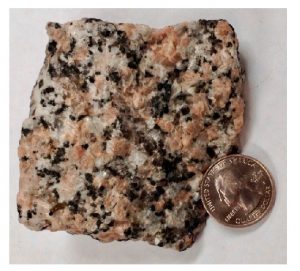
If magma cools slowly, deep within the crust, the resulting rock is called intrusive or plutonic. The slow cooling process allows crystals to grow large, giving the intrusive igneous rock a coarse-grained or phaneritic texture. The individual crystals in phaneritic texture are readily visible to the unaided eye like you see in the image above.
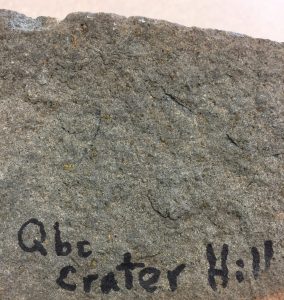
When lava is extruded onto the surface, or intruded into shallow fissures near the surface and cools, the resulting igneous rock is called extrusive or volcanic. Extrusive igneous rocks have a fine-grained or aphanitic texture, in which the grains are too small to see with the unaided eye like you see in the image above. The fine-grained texture indicates the quickly cooling lava did not have time to grow large crystals.
.jpg?revision=1&size=bestfit&width=350&height=350)
In some cases, extrusive lava cools so rapidly it does not develop crystals at all. This non-crystalline material is not classified as minerals but as volcanic glass. This is a common component of volcanic ash and rocks like obsidian.
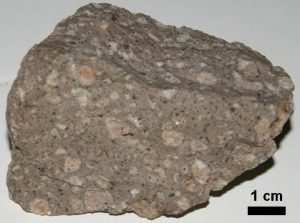
Some igneous rocks have a mix of coarse-grained minerals surrounded by a matrix of fine-grained material in a texture called porphyritic. The large crystals are called phenocrysts and the fine-grained matrix is called the groundmass or matrix. Porphyritic texture indicates the magma body underwent a multi-stage cooling history, cooling slowly while deep under the surface and later rising to a shallower depth or the surface where it cooled more quickly.

Residual molten material expelled from igneous intrusions may form masses containing very large crystals of minerals. This texture, which indicates a very slow crystallization, is called pegmatitic. A rock that chiefly consists of pegmatitic texture is known as a pegmatite. To give an example of how large these crystals can get, transparent cleavage sheets of pegmatitic muscovite mica were used as windows during the Middle Ages. In North Dakota, there is a single feldspar crystal the size of a small car!

All magmas contain dissolved gases. As the magma rises to the surface, the drop in pressure causes gasses to come bubbling out of solution, like the fizz in an opened bottle of soda. The gas bubbles become trapped in the solidifying lava to create a vesicular texture, with the holes specifically called vesicles. The type of volcanic rock with common vesicles is called scoria.

An extreme version of scoria occurs when volatile-rich lava is very quickly quenched and becomes a meringue-like froth of glass called pumice. Some pumice is so full of vesicles that the density of the rock drops low enough that it will float.
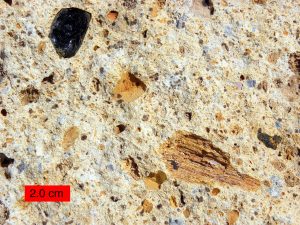
When volcanoes erupt explosively, vast amounts of lava, rock, ash, and gases are thrown into the atmosphere. The solid parts, called tephra, settle back to earth and cool into rocks with pyroclastic textures. Pyro, meaning fire, refers to the igneous source of the tephra and clastic refers to the rock fragments. Tephra fragments are named based on size—ash (<2 mm), lapilli (2-64 mm), and bombs or blocks (>64 mm). Rock formed from large deposits of tephra fragments is called tuff.
Composition
Composition refers to a rock’s chemical and mineral make-up. For igneous rock, the composition is divided into four groups: felsic, intermediate, mafic, and ultramafic. These groups refer to differing amounts of silica, iron, and magnesium found in the minerals that make up the rocks. Granite is a commonly-used term but has a very specific definition which includes exact quantities of minerals like feldspar and quartz. Rocks labeled as ‘granite’ in laymen applications can be several other rocks, including syenite, tonalite, and monzonite (which we will not address in this text). To avoid these complications, the following figure presents a simplified version of igneous rock nomenclature focusing on the four main groups, which is adequate for an introductory student.

- Felsic refers to a predominance of the light-colored (felsic) minerals feldspar and silica in the form of quartz. These light-colored minerals have more silica as a proportion of their overall chemical formula. Minor amounts of dark-colored (mafic) minerals like amphibole and biotite mica may be present as well. Felsic igneous rocks are rich in silica (in the 65-75% range, meaning the rock would be 65-75% weight percent SiO2) and poor in iron and magnesium.
- Intermediate is a composition between felsic and mafic. It usually contains roughly-equal amounts of light and dark minerals, including light grains of plagioclase feldspar and dark minerals like amphibole. It is intermediate in silica in the 55-60% range.
- Mafic refers to an abundance of ferromagnesian minerals (with magnesium and iron, chemical symbols Mg and Fe) plus plagioclase feldspar. It is mostly made of dark minerals like pyroxene and olivine, which are rich in iron and magnesium and relatively poor in silica. Mafic rocks are low in silica, in the 45-50% range.
- Ultramafic refers to the extremely mafic rocks composed of mostly olivine and some pyroxene which have even more magnesium and iron and even less silica. These rocks are rare on the surface, but make up peridotite, the rock of the upper mantle. It is poor in silica, in the 40% or less range.
On the figure above, the top row has both plutonic and volcanic igneous rocks arranged in a continuous spectrum from felsic on the left to intermediate, mafic, and ultramafic toward the right. Rhyolite refers to the volcanic and felsic igneous rocks and granite refer to intrusive and felsic igneous rocks. Andesite and diorite likewise refer to extrusive and intrusive intermediate rocks (with dacite and granodiorite applying to those rocks with composition between felsic and intermediate).
Basalt and gabbro are the extrusive and intrusive names for mafic igneous rocks, and peridotite is ultramafic, with komatiite as the fine-grained extrusive equivalent. Komatiite is a rare rock because volcanic material that comes directly from the mantle is not common, although some examples can be found in ancient rocks [2].
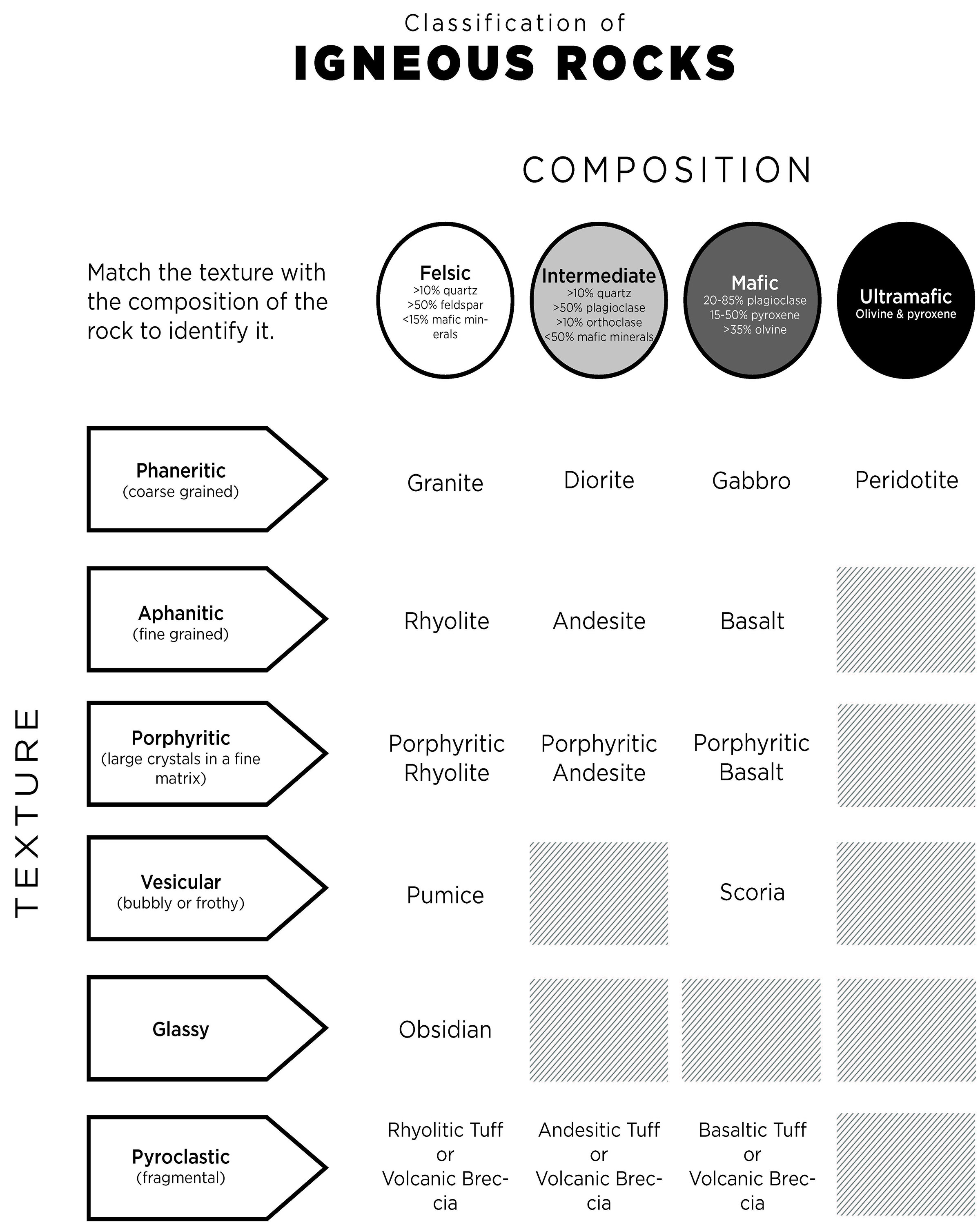
Aphanitic/Phaneritic Rock Types with Images
|
Felsic Composition |
|
![By B.W. Hallett, V. F. Paskevich, L.J. Poppe, S.G. Brand, and D.S. Blackwood [Public domain], <a href="https://commons.wikimedia.org/wiki/File%3AQuartz_monzonite_36mw1037.jpg" Photograph of cut granite. showing a variety of visible minerals, including quartz and k-feldspar.](http://opengeology.org/textbook/wp-content/uploads/2016/07/550px-Quartz_monzonite_36mw1037.jpg)
|

|
| Granite is a course-crystalline felsic intrusive rock. The presence of quartz is a good indicator of granite. Granite commonly has large amounts of salmon pink potassium feldspar and white plagioclase crystals that have visible cleavage planes. Granite is a good approximation for the continental crust, both in density and composition. | Rhyolite is a fine-crystalline felsic extrusive rock. Rhyolite is commonly pink and will often have glassy quartz phenocrysts. |
| Intermediate Composition | |

|

|
| Diorite is a coarse-crystalline intermediate intrusive igneous rock. Diorite is identifiable by it’s Dalmatian-like appearance of black hornblende and biotite and white plagioclase feldspar. | Andesite is a fine crystalline intermediate extrusive rock. It is commonly grey and porphyritic. It can be found in the Andes Mountains and in some island arcs (see Chapter 2). It is the fine grained compositional equivalent of diorite. |
| Mafic Composition | |
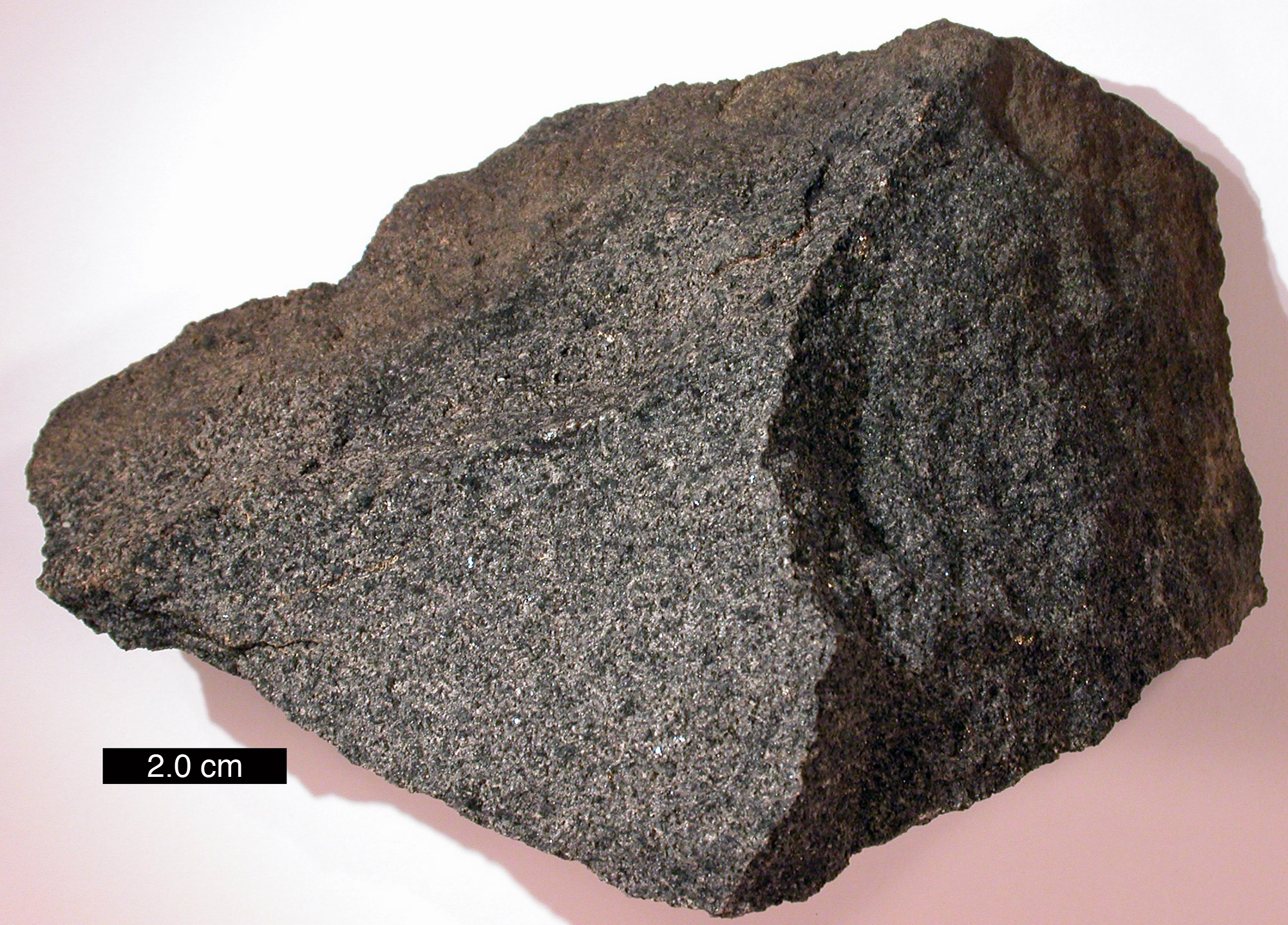
|
![By Jstuby at en.Wikipedia (Own workTransferred from en.Wikipedia) [Public domain], <a href="https://commons.wikimedia.org/wiki/File%3AVessicularBasalt1.JPG" Dark grey rock with many visible holes and no visible crystals.](http://opengeology.org/textbook/wp-content/uploads/2016/07/VessicularBasalt1.jpg)
|
|
Gabbro is a coarse-grained mafic igneous rock, made with mainly mafic minerals like pyroxene and only minor plagioclase. Gabbro is a major component of the lower oceanic crust. |
Basalt is a fine-grained mafic igneous rock. It is commonly vesicular and aphanitic. Basalt is the main rock which is formed at mid-ocean ridges, and is therefore the most common rock on the Earth’s surface, making up the entirety of the ocean floor (except where covered by sediment). |
Igneous Rock Bodies
Igneous rocks are common in the geologic record, but surprisingly, it is the intrusive rocks that are more common. Extrusive rocks, because of their small crystals and glass, are less durable. Plus, they are, by definition, exposed to the elements of erosion immediately. Intrusive rocks, forming underground with larger, stronger crystals, are more likely to last. Therefore, most landforms and rock groups that owe their origin to igneous rocks are intrusive bodies. A significant exception to this is active volcanoes, which are discussed in a later section on volcanism. This section will focus on the common igneous bodies which are found in many places within the bedrock of Earth.
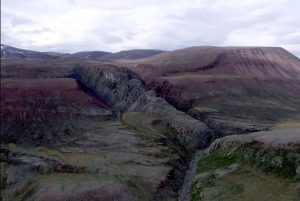
When magma intrudes into a weakness like a crack or a fissure and solidifies, the resulting cross-cutting feature is called a dike (sometimes spelled dyke). Because of this, dikes are often vertical or at an angle relative to the pre-existing rock layers that they intersect.

Sills are another type of intrusive structure. A sill is a concordant intrusion that runs parallel to the sedimentary layers in the country rock. They are formed when magma exploits a weakness between these layers, shouldering them apart and squeezing between them.

A magma chamber is a large underground reservoir of molten rock. The processes by which a magma intrudes into the surrounding native or country rock are not well understood and are the subject of ongoing geological inquiry [3]. For example, it is not known what happens to the pre-existing country rock as the body intrudes. The cooking magma forms a mass of intrusive rock called a pluton. Plutons can have irregular shapes, but can often be somewhat round.
![By Jon Sullivan ([1]) [Public domain], <a data-cke-saved-href="https://commons.wikimedia.org/wiki/File%3AYosemite_20_bg_090404.jpg" href="https://commons.wikimedia.org/wiki/File%3AYosemite_20_bg_090404.jpg" View showing an expansive area of a mountain range with exposed white granite in many places.](http://opengeology.org/textbook/wp-content/uploads/2017/05/04.2_Yosemite_Half-Dome-300x225.jpg)
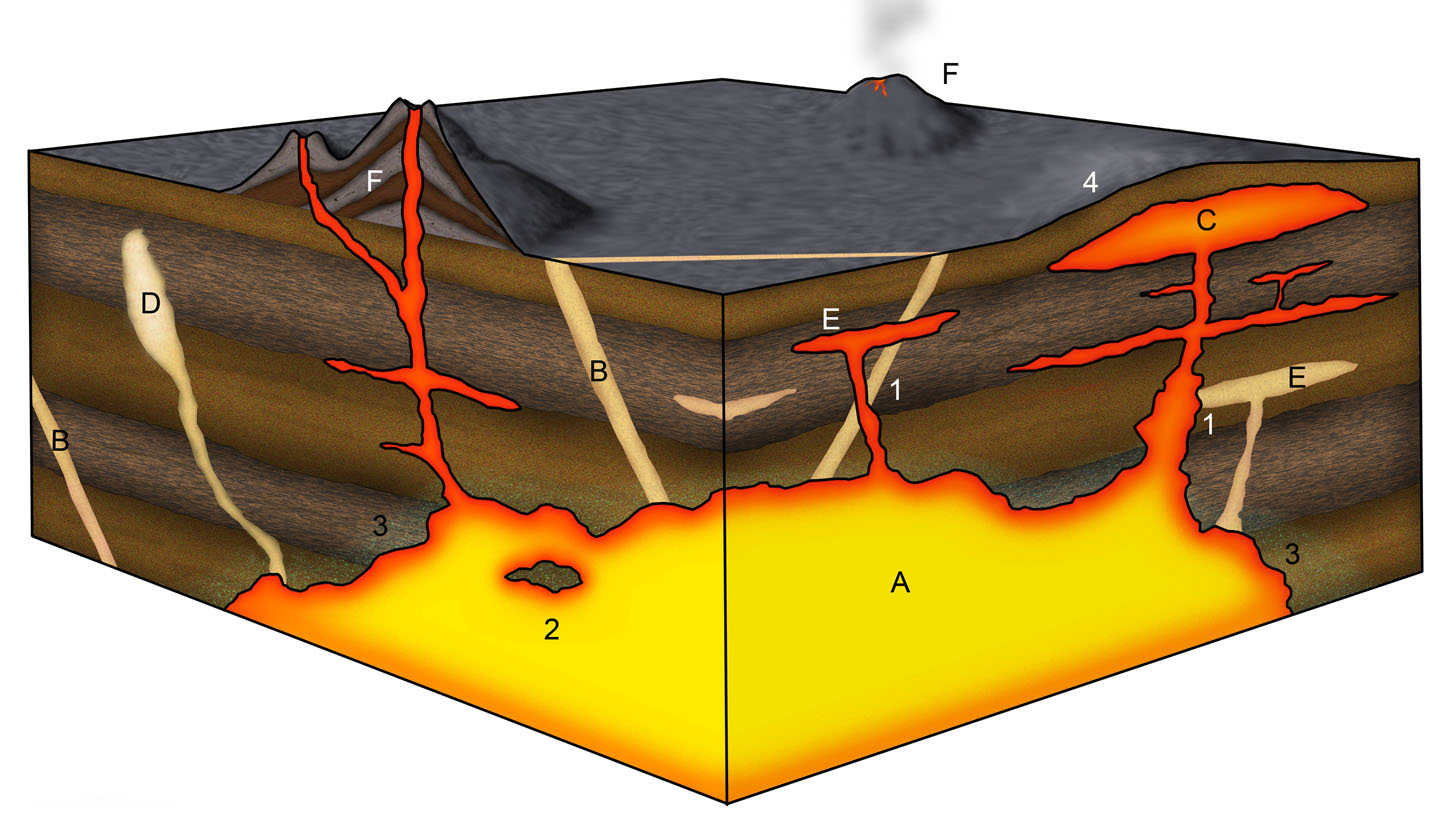
| Guide for Igneous Structures Image (shown above) |
|---|
| Number/Letter | Description |
|---|---|
| 1 | Young, emerging subvolcanic intrusion cutting through older one |
| 2 (not addressed in this text) | Xenolith (solid rock of high melting temperature which has been transported within the magma from deep below) or roof pendant (fragment of the roof of the magma chamber that has detached from the roof and sunk into the melt) |
| 3 (not addressed in this text yet) | Contact metamorphism in the country rock adjacent to the magma chamber (caused by the heat of the magma) |
| 4 | Uplift at the surface due to laccolith emplacement in the near sub-ground |
| A | Active magma chamber (called pluton when cooled and entirely crystallized; a batholith is a large rock body composed of several plutonic intrusions) |
| B | Old magmatic dykes/dikes |
| C (not addressed in this text) | Emerging laccolith |
| D | Old pegmatite (late-magmatic dyke formed by aggressive and highly mobile residual melts of a magma chamber) |
| E | Old and emerging magmatic sills |
| F | Stratovolcano |


